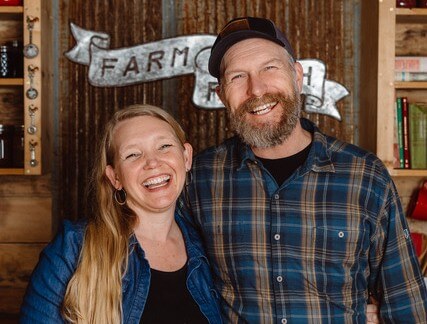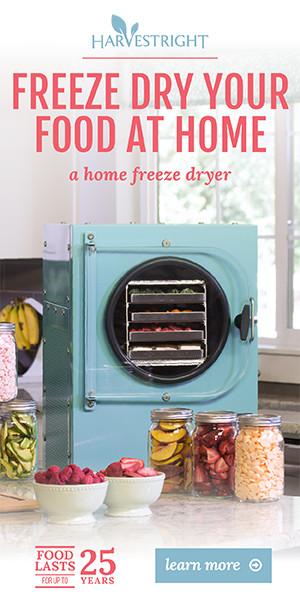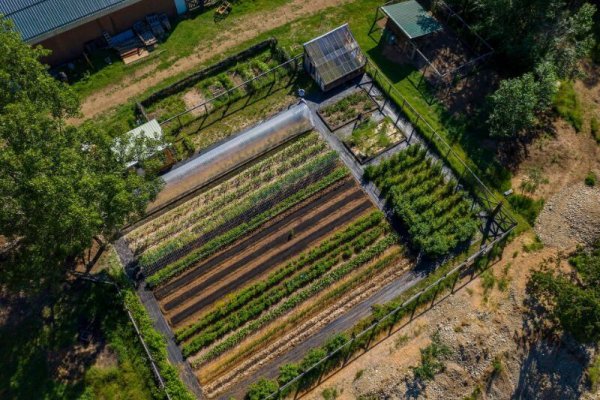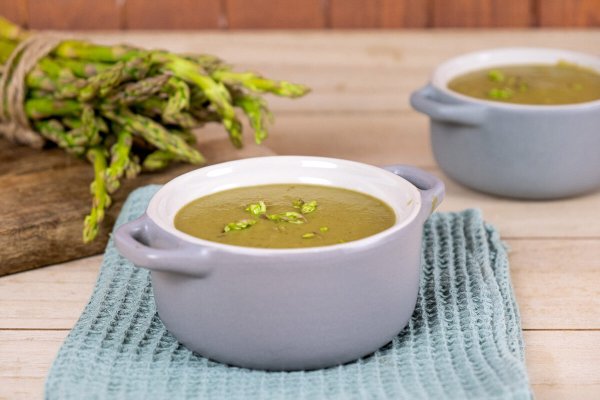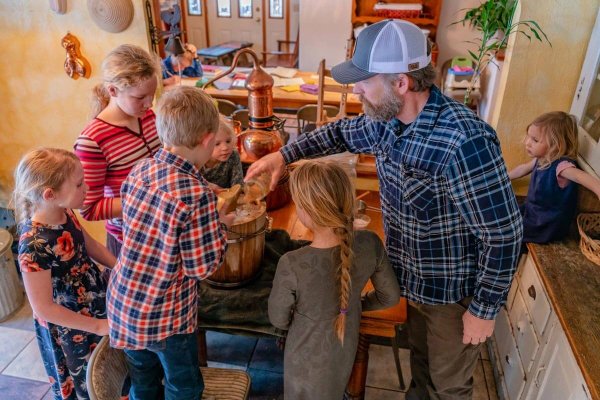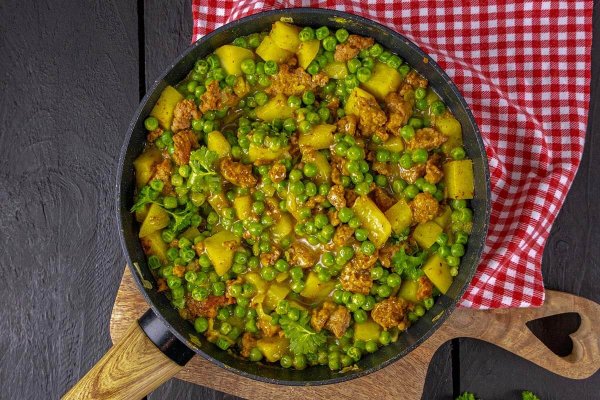









An old-fashioned cottage garden is a magical place. It is beautiful, practical, wild, and cultivated… all at the same time! It’s a place of amazing smells and delicious food. Come learn how to easily design your own old-fashioned cottage garden!
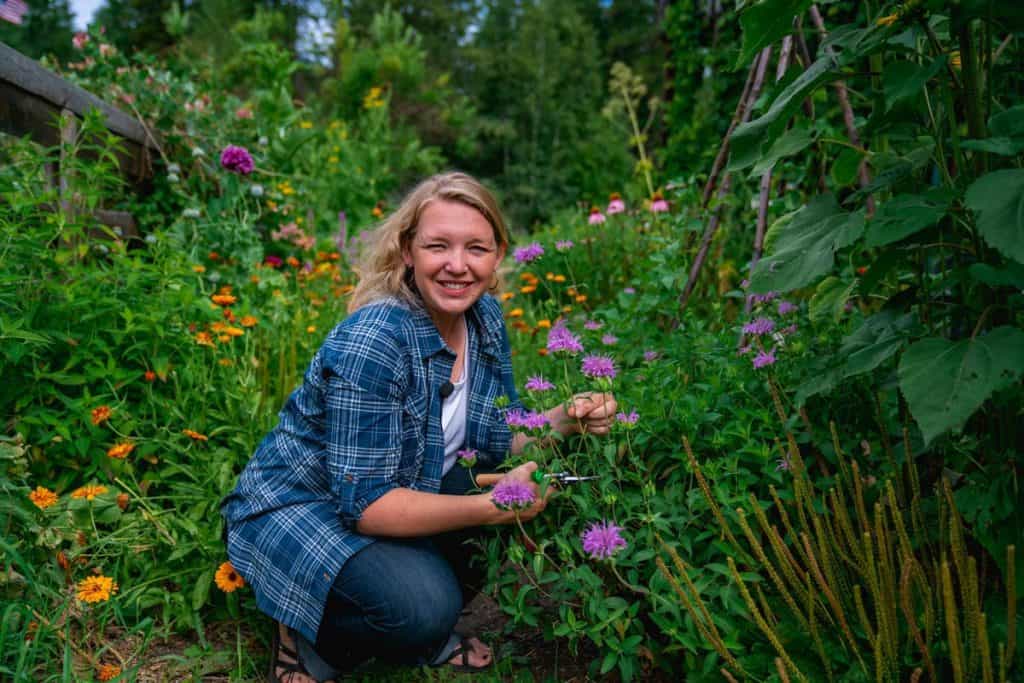
I’ve been dreaming of the moment I could put in my long-term cottage garden, filled with culinary herbs that I can dry and use year-round, medicinal herbs to create my own herbal infused oils and other home remedies, cosmetic herbs like my Damask rose for my homemade face wash, beautiful cut flowers to grace my kitchen table, veggies to snack on while working in the garden, and, of course, quiet sitting places for my morning cup of coffee!
In the video below, you will see the transformation from grass to a (baby) cottage garden, along with my basic directions on how to turn a lawn into a garden… be sure to scroll through this entire post to see an updated video of what our cottage garden looks like three years later, plus photos of our garden throughout the season and just how HUGE these plants grew!
You may be wondering what are the best cottage garden plants to grow, as well as which cottage garden flowers will attract all kinds of pollinators like bees and butterflies. Or maybe you’re wondering where to begin with medicinal herbs.
We’ll cover all this as well as discuss the design ideas that helped shape our own cottage garden.
If you’d like a list of the plants that we’ve planted in the cottage garden, you can download the complete plants and herbs list here.
Also, if you want to start using natural healing for your family, register for our special FREE training, Healthy Healing at Home here.
You can also see how Josh used the lasagna method to turn a lawn into a productive garden space here.
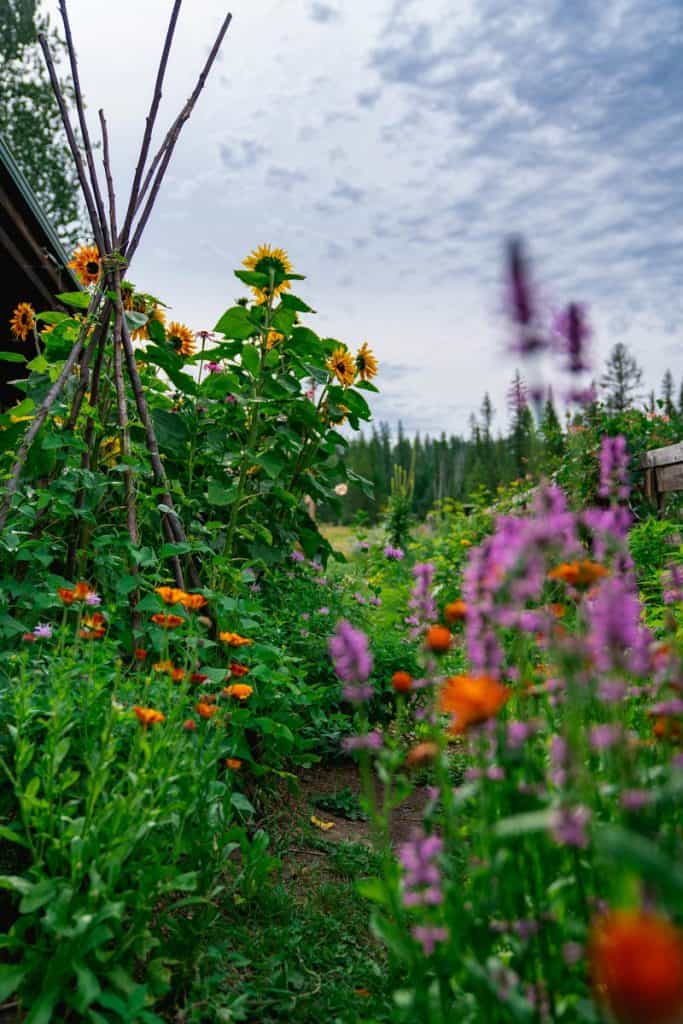
What Is a Cottage Garden?
A cottage garden is much different than the main crop garden that’s filled with orderly straight lines and a formal structure.
A cottage garden consists of curvy lines, natural materials, and a mixture of densely planted ornamental and edible plants. It can be filled with beautiful cut flowers and culinary herbs.
It should feel whimsical and wild, evoke creativity, and inspire both relaxation and motivation to cook delicious food, freeze-dry herbs, or put up herbal home remedies .
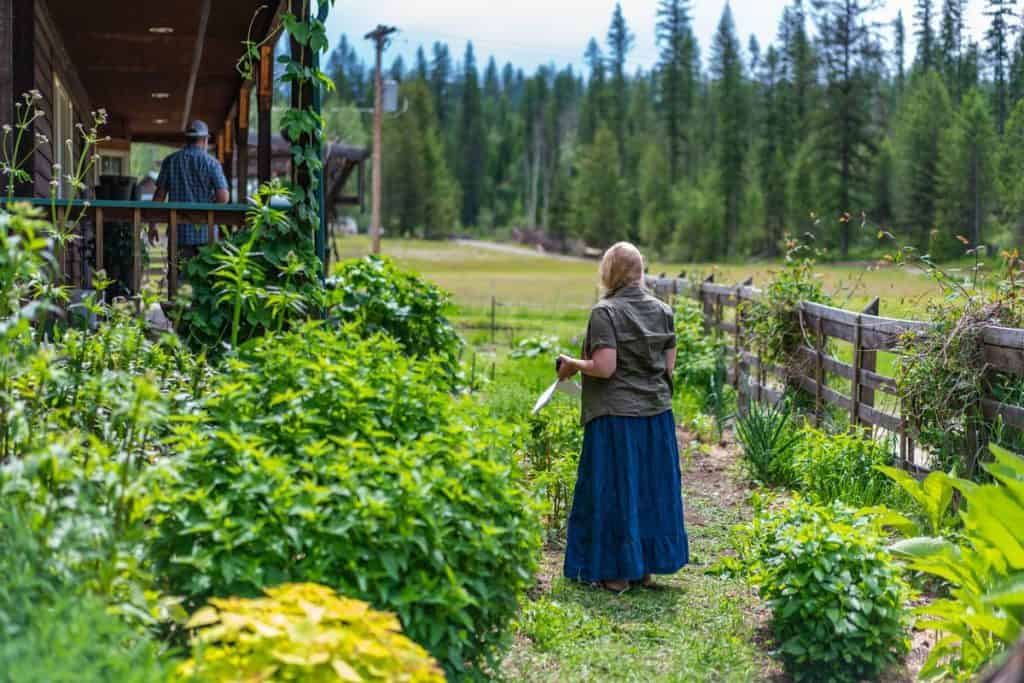
Designing a Cottage Garden
When designing your own cottage garden it’s important to consider what exactly you want to get out of the garden. By asking yourself a few questions, you can begin to create your list of plants which will be a great start for your garden.
- How much space are you working with?
- Do you want to grow culinary herbs?
- Would you like to grow medicinal herbs?
- Do you want to attract bees and butterflies?
- How about growing flowers you can cut and enjoy indoors?
- Do you plan to make homemade cosmetics?
Knowing the answer to these questions can give you a great start in drawing up a design for your garden.
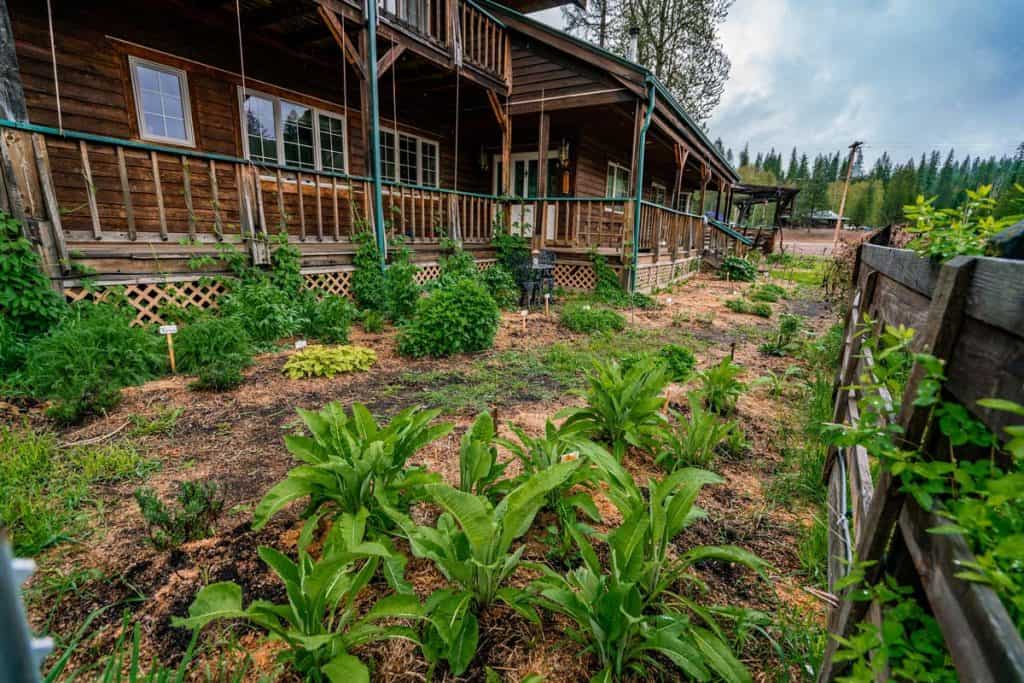
Plan Your Walkways
As I mentioned in the video above, I like to start my garden plan by sketching out the walkway.
By drawing out a curvy pathway alongside the length of my home, I can then begin to fill in the spaces with the herbs and flowers I want to grow.
Remember, a traditional cottage garden is full of curvy lines!
Plant Smallest to Tallest
When sketching out your garden, think “smallest to tallest”. Planting the smallest plants along the edges of the pathway, working outward to those that will grow up to a medium height, then bordering the garden with those that will grow the tallest along the outermost edges.
Planting from smallest to tallest will allow you to see everything you’ve planted as you’re walking through your garden.
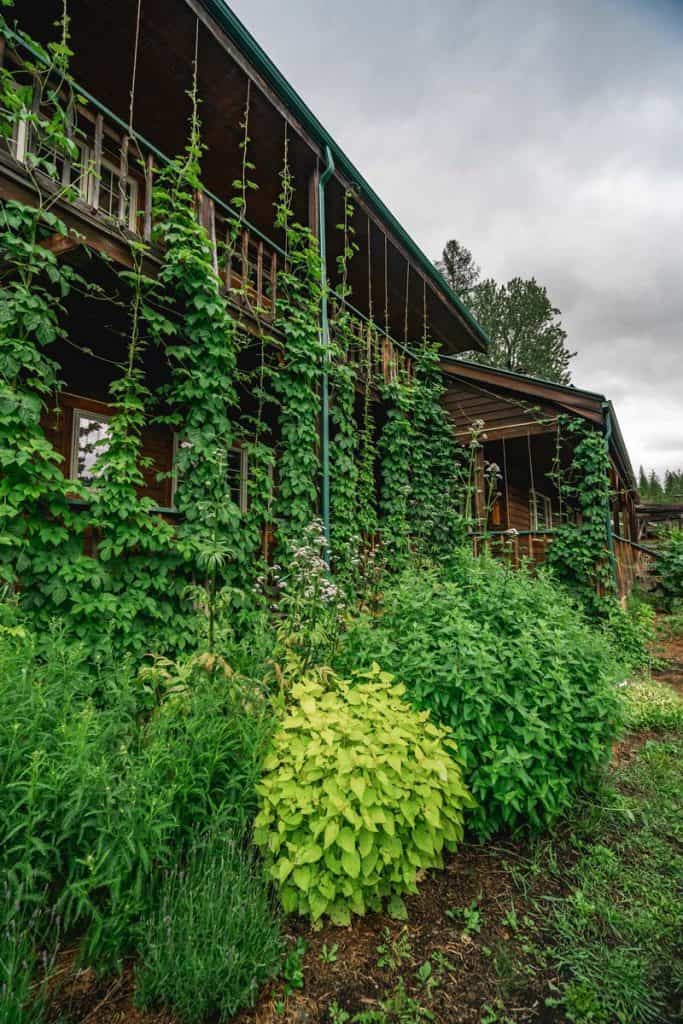
Consider Average Growth
You’ll want to have an idea of the average size of each plant you’re putting into the cottage garden to know just how much space to give between plants.
Yes, traditional cottage gardens are packed densely, but you don’t want to plant so densely that you limit the potential of each plant, or inhibit your ability to harvest from them.
You can always maintain the plant’s size by trimming throughout the seasons, but true cottage gardens grow wild and free, so you want to mimic this feeling in your own garden.
Perennials or Annuals
In our cottage garden, we planted a mixture of both perennials and annuals. The bulk of the garden is made up of perennials that will come back year after year, but I do like to sprinkle in some annuals like cut flowers and some vegetables.
The goal with a cottage garden, however, is to plant once and enjoy it for years to come. This is why planning is an important part of the design process.
Ideally, your perennial plants will come back stronger and bigger each year. The fun part is, if you don’t want your plants to get larger, you can oftentimes dig up and divide them to gift to friends or transplant the extra growth to other areas of your property.
Having a never-ending supply of these plants is a beautiful thing, and allows you to be extremely generous to those who want to start their own cottage gardens.

What Plants Go In A Cottage Garden?
There are no set rules when it comes to what plants are allowed in a cottage garden. This is where your own preferences will help guide you.
In my cottage garden, I plant some annual vegetables that the kids can come snack on throughout the summer. Things like cherry tomatoes, little tiny gherkin cucumbers, and plenty of culinary herbs for afternoon cups of iced tea!
- Culinary Herbs
- Medicinal Herbs
- Cosmetic Herbs
- Food
- Pollinator-Friendly Plants
- Cut Flowers
Below I’ll list the specific plants that fit into each category. As you’ll see, some plants fit into multiple categories, these are my favorite plants to grow!
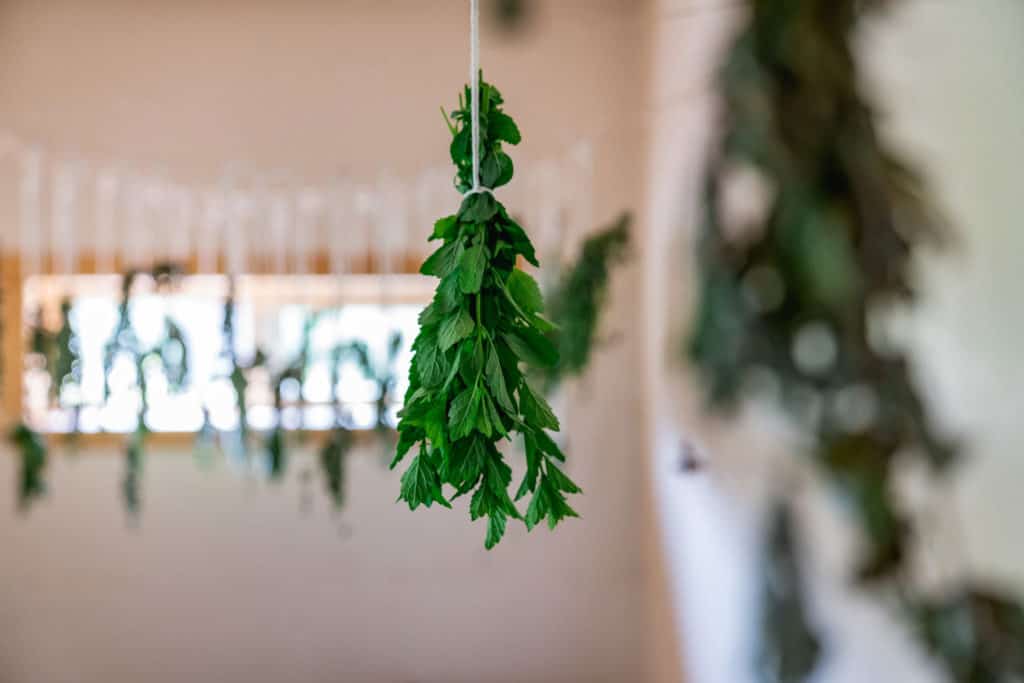
Culinary Herbs
- Lemon Balm
- Lemongrass
- Lovage
- Marjoram
- Nasturtium
- Oregano
- Parsley
- Peppermint
- Rosemary
- Sage
- Sorrel
- French Tarragon
- Thyme
- Winter Savory
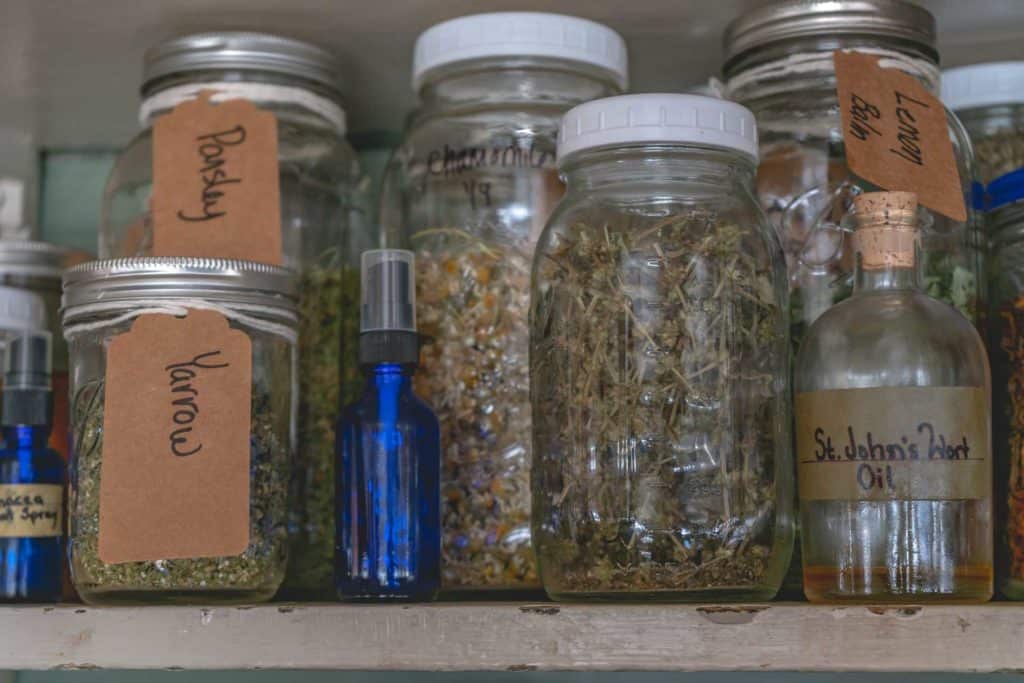
Medicinal Flowers & Herbs
- Holy Basil
- Hollyhock
- Hops
- Hyssop
- Lavender
- Lemon Balm
- Lovage
- Marjoram
- Marshmallow
- Motherwort
- Multiplier Onions
- Oregano
- Parsley
- Peppermint
- Purslane
- Rosemary
- Sage
- Spilanthes
- Thyme
- Valerian
- Wood Betony
- Yarrow
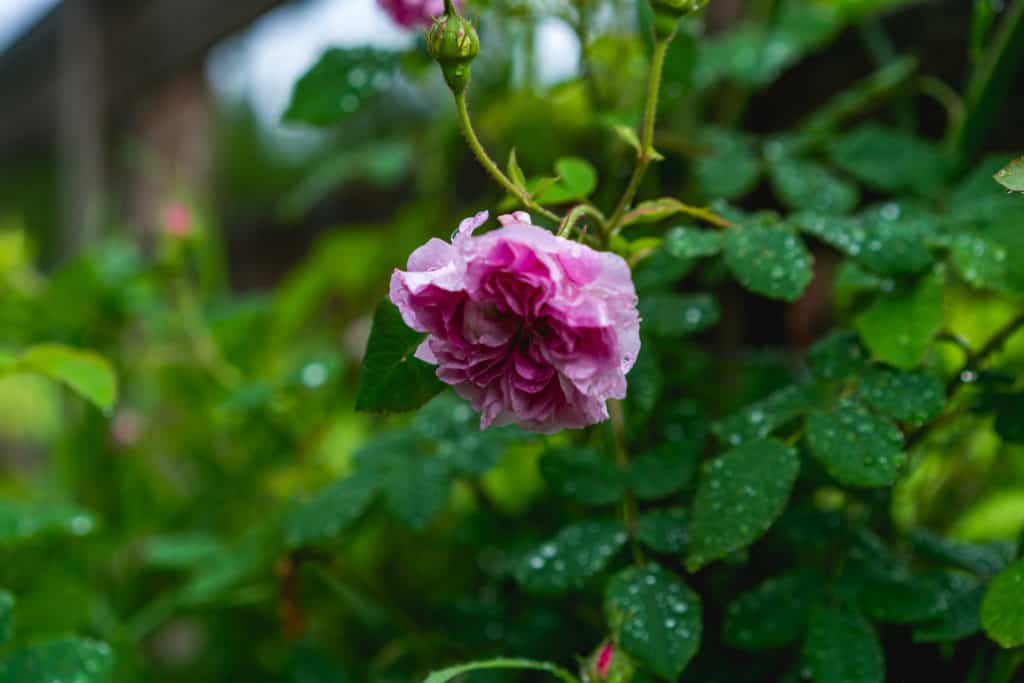
Cosmetic Flowers & Herbs
- Echinacea
- Hollyhock
- Lavender
- Lemon Balm
- Marshmallow
- Rosemary
- Sunflower
- Thyme

Cottage Garden Edibles
- Alexanders
- Basil
- Fennel
- Good King Henry
- Holy Basil
- Hollyhock
- Leeks
- Lovage
- Marshmallow
- Multiplier Onions
- Nasturtium
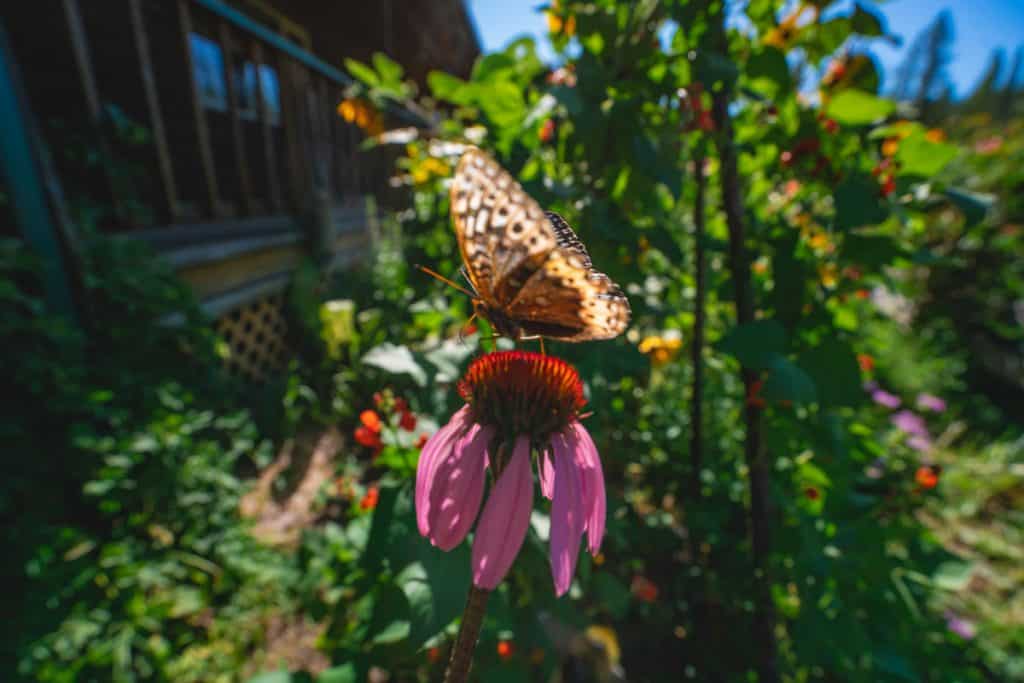
Pollinator Plants
- Holy Basil
- Hollyhock
- Hyssop
- Lavender
- Lemon Balm
- Marjoram
- Marshmallow
- Morning Glories
- Nasturtium
- Oregano
- Peppermint
- Rosemary
- Runner Beans
- Spilanthes
- French Tarragon
- Thyme
- Valerian
- Winter Savory
Whether you are a beekeeper, are considering keeping bees, or just want to attract pollinators, here is some expert advice about beginner beekeeping and must-have beekeeping supplies.

Cottage Garden Cut Flowers
- Cosmos
- Damask Rose
- Hollyhock
- Hyssop
- Lavender
- Marshmallow
- Spilanthes
- Yarrow

If you’ve designed your own cottage gardens, we’d love to see them! Tag us on social media @homesteadingfamily so we can enjoy the beauty!
Related Posts
If you’re interested in creating your own cottage garden, you may also be interested in some of these posts we’ve written…

